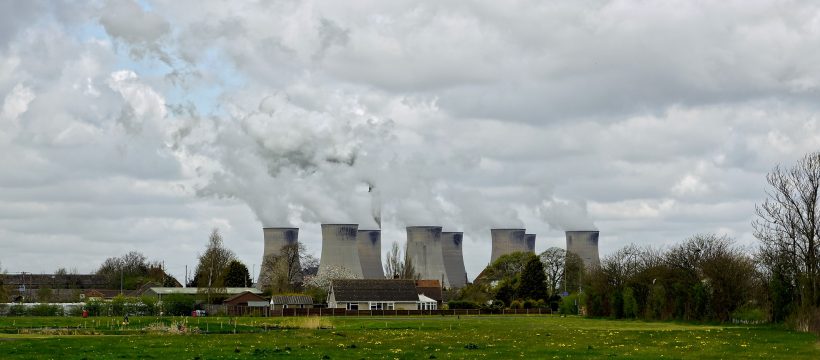Hybrid Cars are not Green
In November 2018 The Miles Consultancy announced that plug-in hybrid cars emitted three times more C02 than claimed in real world driving conditions. TMC have 80 staff based in Cheshire and audit data from multiple sources on behalf of companies who operate big fleets of vehicles. They found that the average PHEV does 39mpg, about 90 less than manufacturers claimed. They were also burning more fuel than the average diesel fleet car.
From 2011 to 2018 the Government gave grants of up to £4,500 off new plugin hybrid electric vehicles. 70% were bought by corporate fleets, and are usually driven long distances. The cars are heavier and less fuel efficient because they contain both a regular engine and the electric setup. But the batteries are small, and only capable of local trips. Consequently many PHEVs were never ever plugged in to be charged. They were not green at all.
In November 2020 The Telegraph, quoted Julia Poliscanova, of Transport and Environment as saying, “Plug-in hybrids are fake electric cars, built for lab tests and tax breaks, not real driving.” They found that when driven in battery charging mode PHEVs emissions were 3-12 times more than official figures. What is the Advertising Standards Authority doing about this? There’s plenty of real world data available, and Which has lots to say. Even their best model in tests, the Toyota Prius, was found to deliver 39% worse fuel economy than claimed.
Electric cars are not as green as claimed
I previously wrote about the abysmal electric car charging facilities in Bow. I also discovered that electric cars are now good enough, but expensive. During their lifetime they’ll pollute about half as much as a petrol or diesel car. But our electricity supply is being greenwashed. “Green energy” companies can buy in REGO certificates – Renewable Energy Guarantees of Origin – for £1 per customer a year! There’s a built-in loophole – you can buy the certificates without buying the electricity generated from renewables.
In the third quarter of 2019 renewables generated slightly more electricity than fossil fuels in the UK. One elephant in the room is that an additional 19% of our electricity was generated by nuclear. The government keeps putting off replacing Britains ancient reactors. The other elephant is that the renewables figure includes 12% from burning biomass.
Drax, the UK’s largest power station is about to stop burning coal completely and has transitioned to burning ‘sustainable’ biomass in the form of wood pellets. Hardwood forests near New Orleans are being chopped down and the pellets are being shipped 6,000 miles across the Atlantic. Is this really green? The plant in the US was recently fined $2.5m for breaching air pollution rules. The government is giving Drax £700 million a year through a levy on our electric bills. In February 2021 Drax bought a Canadian wood pellet producer. The company in British Columbia burns natural gas to dry the wood pellets.
The carbon emissions coming out of the chimney stacks at Drax are not counted as C02 emissions. Drax say that new trees will be planted to reabsorb the C02. But that will take 100 years. The problem we’re supposed to be tackling is called a ‘climate emergency’.
If you take burning biomass out of the renewable energy figure the electricity you charge up an electric car with only contains 27% renewables. Claims of 47% renewable electricity generation for Jan and Feb this year should be read against the fact that we’re in a lockdown and that many places are shut.

Bjorn Lomborg has been providing the Danish Government with economic and environmental cost-benefit analyses for almost 20 years. A few months ago he published a critique of Boris Johnson’s attempt to burnish Britain’s Green credentials by banning the sale of new petrol and diesel cars by 2030.
His article was headed: ‘Electric cars are good fun for wealthy virtue signallers, but a dreadful way to save the planet’. He pointed out that in the US the grants were largely being claimed by people who were wealthy. 90% of electric car owners also had a fossil fuelled car which they used for longer journeys. He also pointed out that personal cars are only responsible for 7% of global C02 emissions.
Electric Vehicles incompatible with Smart Motorways
The heading above is an abbreviation of a statement put out this January by the AA.
Last year Baroness Vere, a transport minister, said she was “astonished” to discover that electric vehicles tend to “stop very suddenly” in the event of fault. They can’t coast like a conventional vehicle, which makes it difficult to cross to the inside lane of a main road, and you’d certainly not be able to get to one of the small infrequent refuges installed on Smart (unsafe) Motorways.
There are no standards that apply across all electric cars. Some are four wheel drive and the electric motors are permanently connected. When they are not powered by current, they switch to braking mode. For towing their popular Model 3 Tesla say the wheels cannot spin unless this is done at under 3 mph (5 km/h) and for up to 30 ft (10 m). So if you conk out on a Smart Motorway you’ve got to wait for your car to be lifted (or hauled) onto a flatbed truck. If it were me I wouldn’t wait inside the car!
Update 3rd October 2021
Suppliers of green electricity are continuing to go bust and their accounts are being transferred to other suppliers. At the end of Sept 2021 Igloo Energy, Symbio Energy and Enstroga also joined the long list. Being the cheapest is not the best option for long term survival. Wholesale prices of gas have gone up due to various reasons. The price of coal in china has more than doubled in a year, and a drought in Brazil meant it had to switch from hydropower to gas, and there are many other reasons why gas is more expensive.
The other big problem is the way that the renewable energy scheme was set up. “Green” suppliers had to buy Renewable Obligation Certificates (ROCs) from people who generated electricity from solar or wind etc. They have to stump up the cash in October.
Alan Tucker


